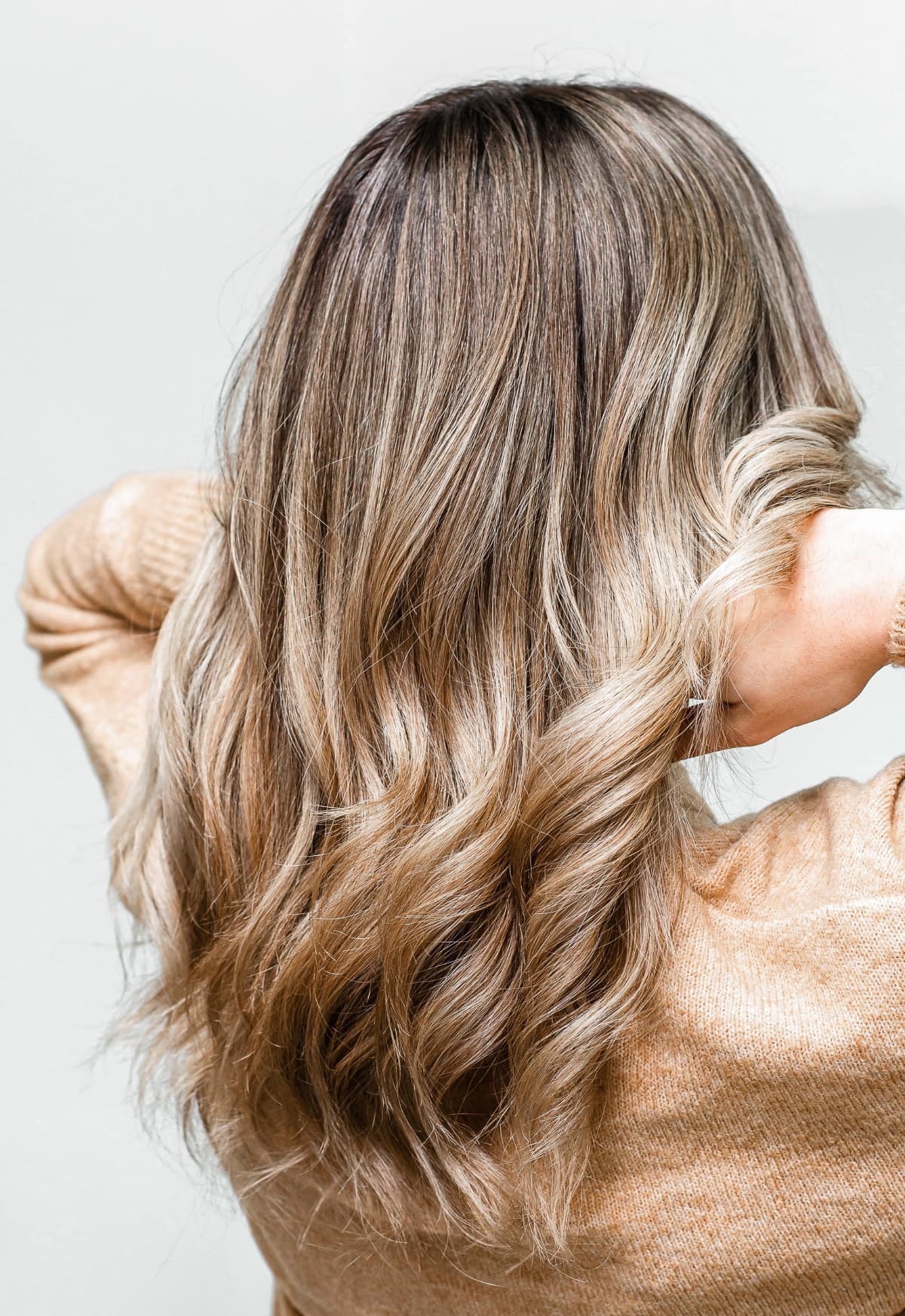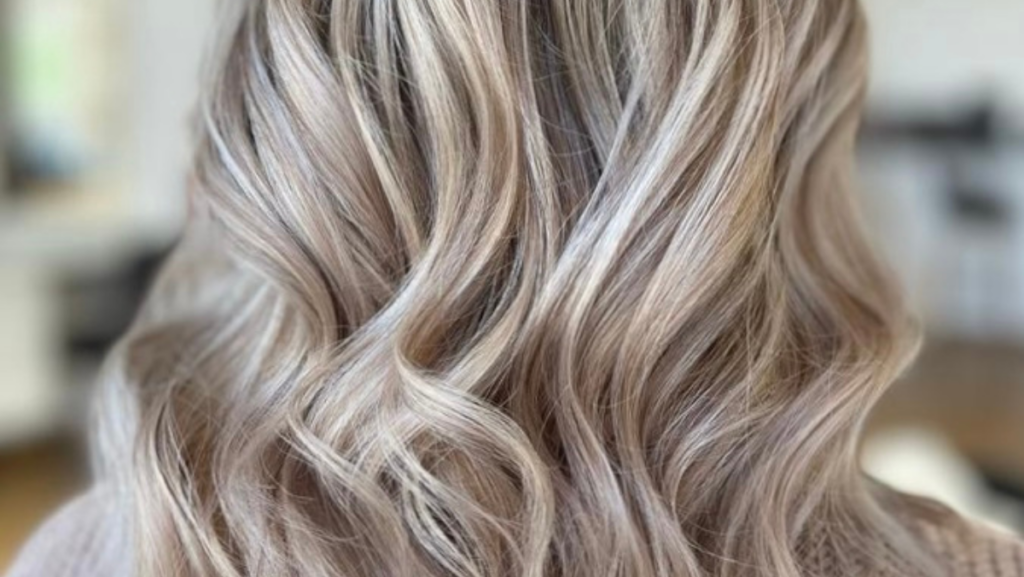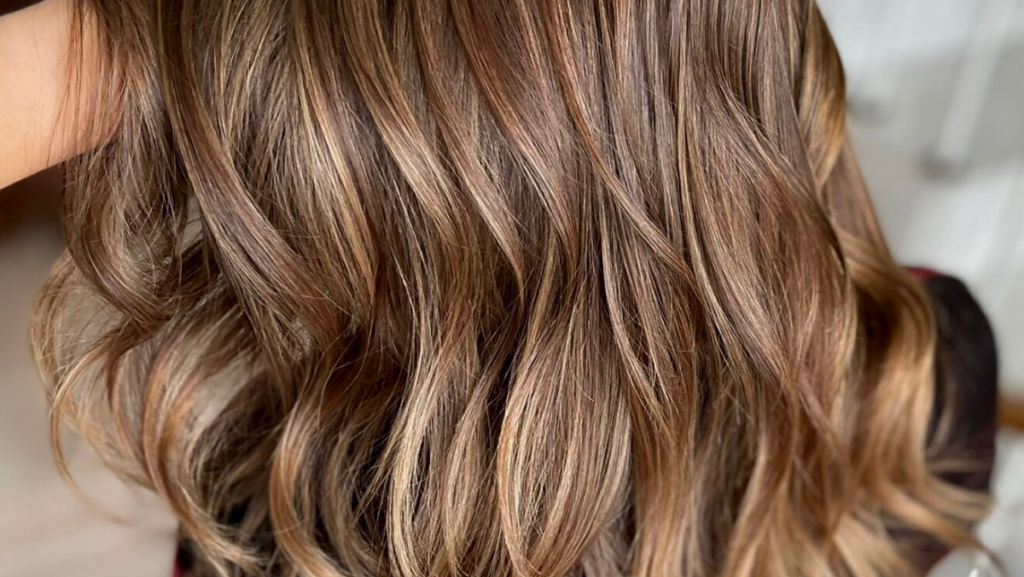
Partial balayage vs full balayage: the forever dilemma of the latest trend followers. Is one option better than the other, and which one should you choose?
If you’re seeking a radiant, multi-dimensional look that exudes effortless charm, you’re in for a treat. The balayage technique can bring your dream hair to life.
In this article, we’ll explore the captivating realm of balayage, focusing specifically on the difference between partial and full balayage.
We’ll unravel the mysteries behind these two techniques, shed light on their differences, and help you determine which option might be the perfect fit for you.
What Is Balayage?
Before we dive into the specifics, let’s first grasp the essence of balayage. Derived from the French term meaning “to sweep,” balayage is a freehand highlighting technique of hair lightening[1].
Instead of traditional foiling methods, balayage artists use their skilled hands to paint color onto sections of the hair, resulting in soft transitions and customized blends.
Your hair colorist will paint all the layers of your hair for a multidimensional and voluminous look. The entirety of your pretty locks will have a soft degradation from your natural color to a lighter one, achieving a natural, sun-kissed effect.
What Is Partial Balayage?
Partial balayage is a technique that focuses on applying balayage highlights to specific sections of the hair, typically the top layer and face-framing strands[2].
The painting technique is the same as full balayage, but the placement of the lighter tones is strategic. This effect enhances your natural features and blends effortlessly with your existing hair color.
Not all your strands will be colored, just a few at the top layer of your hair. It’s the ideal choice for those seeking a subtle yet impactful transformation, adding dimension and depth while maintaining a natural base.
What Is The Difference Between Partial Balayage And Partial Highlights?
While partial balayage and partial highlights may seem similar, they differ in their technique and overall result.
Partial highlights involve using foils or caps to lighten selected sections of the hair, creating distinct streaks. This method often results in more visible lines and a less natural appearance compared to balayage.
Partial balayage, on the other hand, offers a more seamless blend and softer transition between colors. The hand-painted technique allows for a more customized approach, ensuring the lighter parts harmonize beautifully with your natural hair color.
To sum up: Highlights color the entire length of the strand, while balayage colors the strand to softly degrade to a lighter color.

What Is The Difference Between Full And Partial Balayage?
I will now settle the debate about partial balayage vs. full balayage once and for all! The main difference between full and partial balayage lies in the amount of hair that is colored.
With full balayage, the entire head of hair is dyed with a lightener or color, resulting in a bolder and more pronounced effect.
On the other hand, partial balayage is a subtler approach that selectively targets specific sections, providing a touch of dimension and brightness without overwhelming the overall style.
Full balayage is a transformative choice for those looking for a dramatic change or who desire a high-contrast look. Partial balayage, on the other hand, is just enough to shake things up without straying from the original.
To decide on our winner of the partial balayage vs. full balayage debate, I will compare them across several aspects: cost, salon time, duration of results, and overall impact.
| Partial Balayage | Full Balayage | |
| Cost | Generally more affordable than full balayage – less amount of products used | Can be more expensive due to increased coverage |
| Salon Time | Requires less time for application | Requires more time due to extensive hair colored |
| Duration of Results | Lasts around 8-12 weeks before a touch-up | May last longer due to more pronounced results |
| Final Look | Provides subtle dimension and brightness | Offers a bolder, more pronounced transformation |
How Long Does Partial Balayage Take?
The duration of a partial balayage session can vary depending on your hair length, density, and desired outcome.
On average, a partial balayage appointment may take around two to three hours. This timeframe includes consultation, color application, processing time, and styling.
Keep in mind that the artistry and precision involved in partial balayage require time, so it’s essential to set aside a comfortable window to allow for the best results.
How Much Does Partial Balayage Cost?
The cost of a partial balayage varies greatly from salon to salon. The price can be influenced by the salon’s location, reputation, and the experience of the stylist.
Other things can also dictate the price, such as the length of your hair and how complex the desired look is.
Generally, partial balayage tends to be more affordable compared to full balayage since it requires less time and product. However, it’s always best to consult your stylist for an accurate cost estimate based on your specific needs.
Pro tip: It is your hair stylist’s job to inform you of the cost of the process before you dive right in. Do not be afraid to ask for it. Maybe they cannot predict the price accurately, but they can make an estimation.
How Long Does A Partial Balayage Last?
Partial balayage, like any hair color, will gradually fade over time. Not everyone often fancies visits to the salon. So, one of the common questions that arise when considering a partial balayage is: how long will it last?
One of the greatest advantages of this technique is its ability to grow naturally without any harsh lines of color. The gradual fade creates a soft transition, allowing you to enjoy your beautiful, sun-kissed locks for an extended period.
On average, a partial balayage can last anywhere from 8 to 12 weeks before a touch-up is needed. Partial balayage keeps you chic and effortless without much hustle.
Pro tip: To maintain the vibrancy of your partial balayage, it’s recommended to use color-safe hair care products and protect your hair from excessive heat and UV exposure.
Partial Balayage VS Full Balayage: Which One Is Right For You?
Now that we’ve explored everything there is to know about partial balayage vs. full balayage, it’s time to determine which one is best for you.
There are several factors to consider for making the wisest choice based on your needs:
- Personal style and preferences
- Budget
- Lifestyle
If you crave a dramatic transformation, love a high-contrast look, or wish to lighten your hair significantly, full balayage might be the perfect choice for you. It provides a bold and impactful change that can completely revamp your appearance.
On the other hand, if you prefer a more subtle and natural brightening up, with softer transitions to your existing hair color, partial balayage is likely the ideal fit. It offers a touch of dimension and brightness while maintaining the overall harmony of your hair.
However, when deciding between partial balayage and full balayage, you also have to consider your comfort with maintenance routines and your budget.
Partial balayage generally requires less time and product, making it a more cost-effective option compared to full balayage. Additionally, the salon time for partial balayage is usually shorter, making it a convenient choice for those with a busy schedule.
In terms of duration, both partial and full balayage can offer long-lasting results. However, partial balayage may require less frequent touch-ups since the color is strategically placed and blends naturally with your hair. On the other hand, full balayage may require more maintenance as the color is applied to a larger portion of the hair.

Partial Balayage VS Full Balayage: A Conclusion
In the epic battle of partial balayage vs. full balayage, there is no clear winner. It all comes down to personal preference, desired level of change, and the maintenance routine you’re comfortable with.
Whether you opt for the delicate charm of partial balayage or the bold statement of full balayage, both techniques offer endless possibilities for embracing your unique style and enhancing your natural beauty.
Remember, consult with a skilled balayage specialist to discuss your goals, and explore the best approach for achieving your dream hair. Embrace the artistry of balayage and step into a world of captivating color and dimension.
